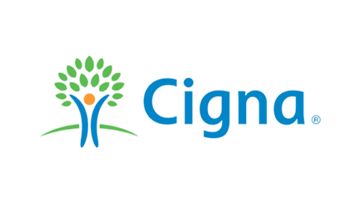Imagine standing in the middle of a storm. The winds are howling, rain lashes against your face, and every instinct screams to run—but there’s nowhere to go. This is what emotional overwhelm feels like for many people. It’s not just the sadness, anger, or anxiety that’s challenging—it’s the sense of being swept away, powerless against the tide.
For years, people in these storms were told to “calm down” or “think positive,” advice that often felt as hollow as shouting at the weather to stop. DBT doesn’t promise to end the storms; instead, it teaches you how to navigate them.
This isn’t just therapy—it’s a toolkit for resilience, a way to not only survive but thrive. Let’s explore the transformative skills of DBT and how they can turn emotional turbulence into opportunities for growth.
What is Dialectical Behavior Therapy (DBT)?
DBT blends cognitive-behavioral techniques with principles of mindfulness derived from Eastern traditions. The term “dialectical” refers to the reconciliation of opposing forces—in this case, the need for acceptance and the need for change. DBT emphasizes balancing these two elements to empower individuals to lead more fulfilling lives.
The therapy is structured around four key modules:
- Mindfulness
- Distress Tolerance
- Emotion Regulation
- Interpersonal Effectiveness
Each module builds specific skills to help clients navigate their emotional landscapes and interactions effectively.
The Core Principles of DBT
DBT operates on several core principles:
- Acceptance and Change: Clients learn to accept themselves as they are while striving for meaningful improvements in their lives.
- Behavioral Science: Understanding the connection between thoughts, emotions, and behaviors helps clients make informed choices.
- Collaboration: Therapy is a team effort involving the client, therapist, and support networks.
- Skills Acquisition: DBT focuses on equipping clients with practical skills to address real-world challenges.
Key Skills in DBT
Mastering emotions often feels like learning to dance in a storm. Dialectical Behavior Therapy (DBT) provides the steps—four key skill areas designed to help individuals find balance, build resilience, and create more meaningful connections.
Let’s dive into each of these life-changing skills.
1. Mindfulness
Mindfulness is the cornerstone of DBT and the foundation upon which all other skills are built. This practice teaches individuals to focus on the present without judgment, observing thoughts and emotions as they arise. Mindfulness is not about eliminating emotions; instead, it helps individuals experience them fully without becoming overwhelmed or acting impulsively.
- How it works: Mindfulness is cultivated through exercises like deep breathing, body scans, and grounding techniques. These practices help individuals center themselves in the “here and now,” preventing the mind from being hijacked by worries about the past or anxieties about the future.
- Applications: Imagine feeling a sudden surge of anger during a conversation. Mindfulness enables you to pause, acknowledge the emotion, and respond thoughtfully instead of reacting impulsively.
Benefits:
- By regularly tuning into thoughts and feelings, individuals gain clarity about their emotional patterns.
- Mindfulness calms the mind and diminishes the intensity of overwhelming emotions.
- Staying present sharpens focus and enhances productivity.
Through mindfulness, DBT empowers individuals to anchor themselves even in turbulent emotional waters, making this skill the bedrock of emotional regulation.
2. Distress Tolerance
Life is full of challenges, and sometimes emotions can feel as though they’re dragging you under. Distress tolerance equips individuals with tools to navigate these crises without resorting to harmful or impulsive behaviors. This skill is particularly valuable in moments of intense emotional pain or when situations cannot immediately be changed.
Key Techniques:
- TIPP (Temperature, Intense Exercise, Paced Breathing, Paired Muscle Relaxation): This is a physiological approach to calming the body and mind quickly. For example, holding an ice pack can lower emotional intensity by engaging the body’s dive response.
- Radical Acceptance: Fighting reality often worsens emotional distress. Radical acceptance encourages individuals to acknowledge and accept situations as they are, fostering a sense of peace.
- Self-Soothing Activities: Engaging the senses—such as listening to calming music, lighting a scented candle, or cuddling a soft blanket—can create moments of comfort during stressful times.
Benefits:
- Distress tolerance teaches individuals to stay calm and grounded during intense emotional or stressful moments.
- By offering constructive alternatives to manage distress, these skills reduce the likelihood of resorting to harmful behaviors, such as self-harm, substance abuse, or outbursts of anger.
- These skills bridge the gap between feeling intense emotions and acting on them, giving individuals time and space to respond thoughtfully rather than react impulsively.
3. Emotion Regulation
Emotions are powerful, and when unmanaged, they can disrupt daily life. Emotion regulation skills are designed to help individuals understand and influence their emotional experiences, bringing stability to even the most intense feelings.
Key Techniques
- Recognize Emotions: Understanding the triggers behind emotions and labeling them accurately is the first step toward gaining control. For instance, instead of saying, “I’m upset,” identify the specific emotion, such as “I feel frustrated.”
- Check the Facts: Not all emotions are justified by reality. For example, if you feel abandoned because a friend didn’t respond to a text, consider other explanations, like them being busy.
- Opposite Action: Sometimes, emotions push us toward behaviors that worsen the situation. Opposite action involves acting contrary to these impulses—for instance, smiling when you’re angry or showing kindness when you’re annoyed.
Benefits:
- Understanding and managing emotions prevents them from controlling your behavior.
- With emotions in check, individuals can think clearly, even under pressure.
- By responding to emotions constructively, individuals foster healthier interactions.
Emotion regulation doesn’t mean suppressing emotions; instead, it’s about guiding them to serve you rather than overwhelm you.
4. Interpersonal Effectiveness
Relationships are the cornerstone of human well-being, yet they can be challenging to navigate. Interpersonal effectiveness skills teach individuals how to communicate their needs, set boundaries, and maintain respect for themselves and others.
- Key Techniques:
- DEAR MAN: This structured approach helps individuals communicate effectively by:
Describing the situation, Expressing feelings clearly, Asserting needs firmly, Reinforcing the desired outcome, Staying Mindful of the goal, Appearing Confident in delivery, Negotiating for a win-win solution.
Example: Requesting a raise at work might involve describing your contributions, expressing gratitude for your job, and asserting why you deserve the raise, all while maintaining professionalism.
- GIVE: This technique fosters healthy relationships by encouraging individuals to be Gentle, Interested in the other person’s perspective, Validate their feelings, and use an Easy manner.
- FAST: Focuses on maintaining self-respect by being Fair, avoiding unnecessary Apologies, Sticking to values, and being Truthful.
Benefits:
- Clear and respectful communication fosters trust and mutual understanding.
- Techniques like DEAR MAN provide structured approaches to handle disagreements calmly and constructively.
- By effectively asserting boundaries and expressing needs, individuals avoid the build-up of resentment from unmet expectations or overextending themselves.
DBT in Practice: What to Expect
Dialectical Behavior Therapy is structured yet adaptable, offering a comprehensive framework to address diverse emotional and behavioral challenges. Clients engage in a combination of therapeutic methods designed to reinforce learning and provide ongoing support.
1. Individual Therapy
- One-on-one sessions are the cornerstone of DBT, allowing therapists to focus on each client’s unique goals and challenges.
- Sessions involve exploring emotional triggers, applying DBT skills to specific situations, and tracking progress over time.
- Therapists also help clients identify barriers to success and work collaboratively to overcome them.
2. Group Skills Training
- Clients participate in group sessions to practice DBT skills like mindfulness, distress tolerance, emotional regulation, and interpersonal effectiveness.
- The group setting encourages peer support, enabling participants to learn from each other’s experiences and strategies.
- Role-playing and collaborative exercises create a safe space to refine communication and problem-solving skills.
3. Phone Coaching
- DBT extends beyond scheduled sessions through phone coaching, where therapists are available to guide clients during emotionally challenging moments.
- This on-the-spot support helps clients apply DBT skills in real-life situations, reinforcing their effectiveness.
- For example, a client struggling with an argument or a triggering event can reach out for immediate assistance in navigating the situation constructively.
4. Homework Assignments
- Clients often receive practical assignments, such as journaling emotional experiences or practicing specific skills in daily life.
- These assignments bridge the gap between therapy sessions, fostering consistent skill development and self-reflection.
5. A Flexible Approach
- DBT is highly adaptive, ensuring that the therapy aligns with each client’s evolving needs and progress.
- Sessions can be adjusted to prioritize urgent concerns while maintaining a focus on long-term goals.
Through its structured yet flexible framework, DBT offers individuals the tools, support, and confidence needed to navigate life’s challenges with greater emotional balance and resilience.
The Bottom Line!
Dialectical Behavior Therapy offers a comprehensive roadmap for managing emotions, building healthier relationships, and navigating life’s challenges. Its emphasis on acceptance and change resonates deeply with individuals seeking to break free from cycles of emotional turmoil. By mastering the skills outlined in DBT, anyone can cultivate a more balanced, fulfilling life.
Whether you’re considering therapy or simply looking to enhance your emotional intelligence, DBT provides practical tools that stand the test of time.

Verify Your Insurance With Us
My Limitless Journeys works with all major insurance companies such as Aetna, Anthem Blue Cross (accepting most BCBS Blue Card plans), First Health, Kaiser Permanente of Southern California, MHN, TriCare West and Quantum Health and Private Pay Insurance.
WE ACCEPT MOST MAJOR INSURANCE PROVIDERS















